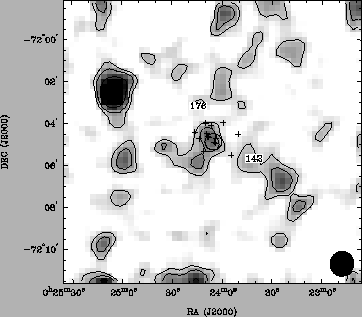

|


|
 |
| 30.01cm | 30.85cmSource/ Pulsar name | 30.85cmCamilo et. al.[1] flux | Observation Date | |||||||||
| 99-Jan-25 | 00-May-05 | 00-Dec-23 | 00-Dec-25 | 00-Dec-27 | ||||||||
| Only 6km | Rescaled | Only 6km | Rescaled | Only 6km | Rescaled | Only 6km | Rescaled | Only 6km | Rescaled | |||
|
80.45cmFlux ( |
142 | 564 | 643 | 839 | 643 | 761 | 643 | 715 | 643 | |||
| 178 | 285 | 218 | 270 | 313 | ||||||||
| C | 360 | 172 | 132 | 202 | 171 | 178 | 160 | |||||
| D | 220 | 244 | 278 | 311 | 238 | 285 | 256 | |||||
| E | 210 | 365 | 328 | |||||||||
| F | 150 | 318 | 268 | |||||||||
| J | 540 | 175 | 148 | 268 | 241 | |||||||
| Q | 50 | 287 | 220 | |||||||||
 |


|